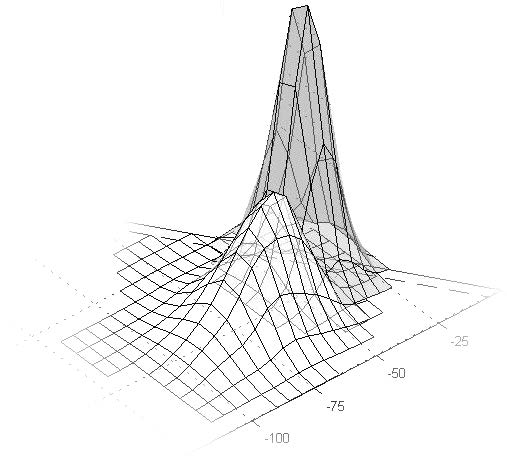Distributions depicting the representativeness of data sampled from two models of categorization. The solid line denotes the decision threshold under one criterion, and the broken line denotes the criterion when the decision is adjusted for the complexity of the model.
Psychologists increasingly wrestle with how to model one of the most sophisticated processing units of all — the human brain. In the cognitive sciences, models are very diverse; they can range from closedform equations with a few parameters to simulation-based models with many parameters. Selecting among competing models — for example, those of the same psychological process — can be a challenge, yet it is one of the fundamental tasks of scientific inquiry.
To aid the selection process, Ohio State University psychologists Mark Pitt, Ph.D., and Jay Myung, Ph.D., have introduced several sophisticated methods adapted from statistics and computer science.
“In our latest work, we’re developing ways to optimize experimental design. Simulating some of the cognitive models we study requires many thousands of iterations to generate a single data point, which itself is repeated many more thousands of times to complete a full simulation,” said Dr. Pitt. “By using the Ohio Supercomputer Center’s supercomputers, we can complete in hours what might take days to accomplish on a PC.”
They’ve also developed methods for analyzing model behavior called landscaping and parameter space partitioning, which, instead of comparing models on their ability to fit a single data set, takes a bird’s eye view of how two models are related to each other.
“Mathematical modeling in psychology is not widespread, simply because there are not a lot of models in the field itself,” said Dr. Pitt. “Our goal in developing these tools is to help researchers gain better insight into model behavior, and, ultimately, better understand how the mind works.”
--
Project leads: Mark Pitt, Ph.D., & Jay Myung, Ph.D., The Ohio State University
Research title: Methods for selecting among mathematical models of cognition
Funding source: National Institutes of Health
